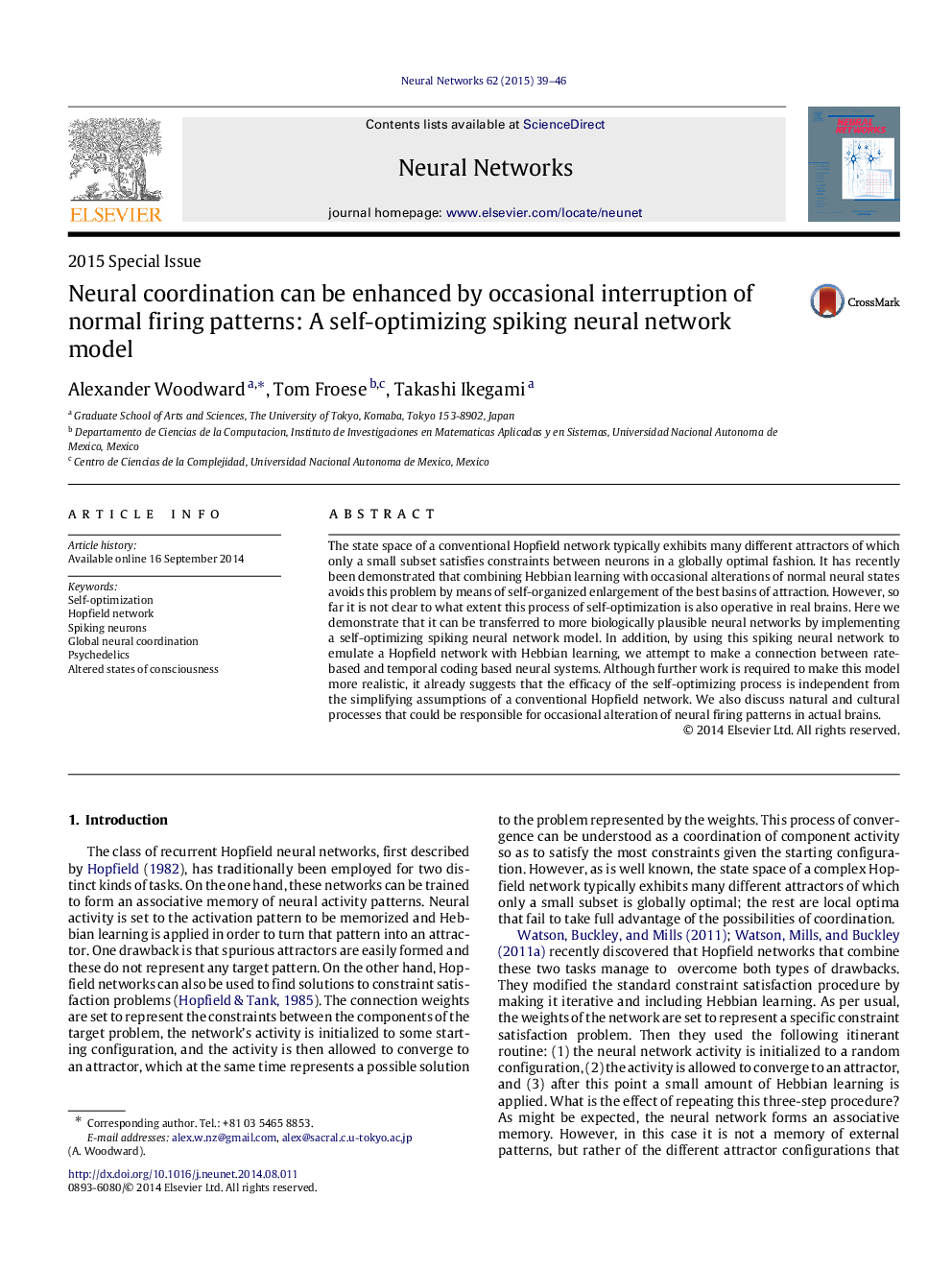| Article ID | Journal | Published Year | Pages | File Type |
|---|---|---|---|---|
| 404160 | Neural Networks | 2015 | 8 Pages |
The state space of a conventional Hopfield network typically exhibits many different attractors of which only a small subset satisfies constraints between neurons in a globally optimal fashion. It has recently been demonstrated that combining Hebbian learning with occasional alterations of normal neural states avoids this problem by means of self-organized enlargement of the best basins of attraction. However, so far it is not clear to what extent this process of self-optimization is also operative in real brains. Here we demonstrate that it can be transferred to more biologically plausible neural networks by implementing a self-optimizing spiking neural network model. In addition, by using this spiking neural network to emulate a Hopfield network with Hebbian learning, we attempt to make a connection between rate-based and temporal coding based neural systems. Although further work is required to make this model more realistic, it already suggests that the efficacy of the self-optimizing process is independent from the simplifying assumptions of a conventional Hopfield network. We also discuss natural and cultural processes that could be responsible for occasional alteration of neural firing patterns in actual brains.
